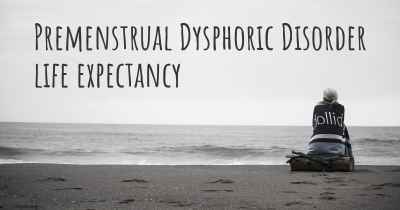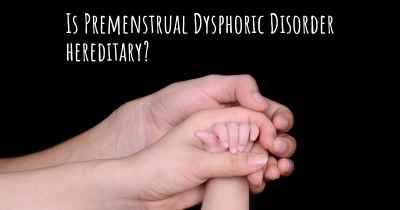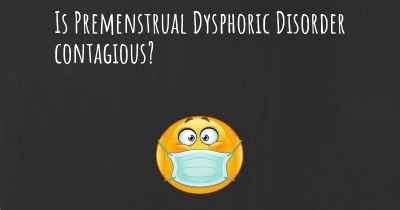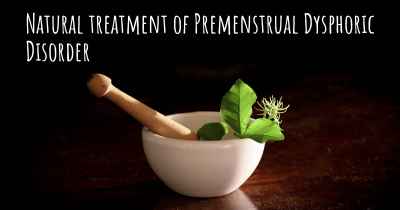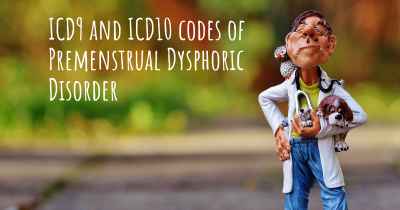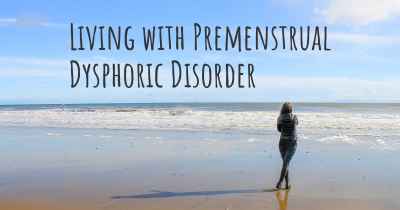What is the history of Premenstrual Dysphoric Disorder?
When was Premenstrual Dysphoric Disorder discovered? What is the story of this discovery? Was it coincidence or not?
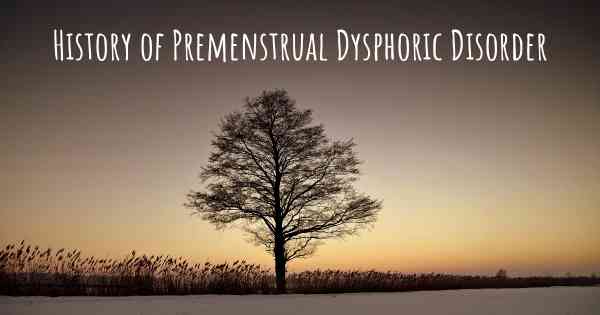
Premenstrual Dysphoric Disorder (PMDD) is a condition that affects some women in the days leading up to their menstrual period. It is characterized by severe emotional and physical symptoms that can significantly impact a woman's quality of life. The history of PMDD dates back several decades, with the recognition and understanding of the disorder evolving over time.
1960s-1970s: During this period, researchers began to explore the concept of premenstrual syndrome (PMS), which encompassed a range of physical and emotional symptoms experienced by women before menstruation. However, the understanding of PMS was limited, and it was often dismissed as a purely psychological issue.
1980s: In the early 1980s, the American Psychiatric Association (APA) included a diagnosis called "late luteal phase dysphoric disorder" in the Diagnostic and Statistical Manual of Mental Disorders (DSM-III). This diagnosis was later renamed as "premenstrual dysphoric disorder" in the DSM-IV, published in 1994. The inclusion of PMDD in the DSM marked a significant step in recognizing the condition as a legitimate mental health disorder.
1990s: Throughout the 1990s, research on PMDD expanded, and studies began to shed light on the underlying causes and potential treatments for the disorder. Researchers discovered that PMDD was linked to hormonal changes during the menstrual cycle, specifically the fluctuations in estrogen and progesterone levels. This finding helped validate the experiences of women suffering from PMDD and further legitimized the disorder.
2000s: In the early 2000s, the development of standardized assessment tools, such as the Daily Record of Severity of Problems (DRSP), allowed for more accurate diagnosis and monitoring of PMDD symptoms. This led to improved understanding and recognition of the disorder among healthcare professionals.
Present: Today, PMDD is recognized as a distinct clinical entity that affects approximately 3-8% of menstruating women. It is characterized by a range of emotional and physical symptoms, including irritability, mood swings, depression, anxiety, bloating, breast tenderness, and fatigue. The severity of symptoms can vary from woman to woman, with some experiencing mild discomfort while others face debilitating symptoms that interfere with daily functioning.
While the exact cause of PMDD is still not fully understood, it is believed to be a combination of hormonal, genetic, and environmental factors. Treatment options for PMDD include lifestyle changes, such as regular exercise and stress reduction techniques, as well as medications like selective serotonin reuptake inhibitors (SSRIs) and hormonal contraceptives.
In conclusion, the history of PMDD has seen significant progress in recognizing and understanding the disorder. From its initial dismissal as a psychological issue to its inclusion in the DSM and the development of assessment tools, PMDD has gained recognition as a legitimate mental health condition. Ongoing research continues to deepen our understanding of PMDD and improve treatment options for women affected by this disorder.
In 2013 was added to the list of mental disorder diseases.
Posted Jul 24, 2017 by Limerencia 2070
Posted Sep 10, 2017 by son678 2000
Premenstrual dysphoric disorder
Classification and external resources
Specialty Psychiatry
ICD-10 F38.8
ICD-9-CM 311,[1] 625.4[2]
MedlinePlus 007193
eMedicine article/293257
[edit on Wikidata]
Signs and symptoms
Causes
Diagnosis
Treatment
Epidemiology
History Edit
The diagnostic category was first made part of the DSM-IIIR in 1987, when it was named "Late Luteal Phase Dysphoric Disorder" and included in an appendix as a proposed diagnostic category needing further study. Preparations for the DSM-IV led to debate about whether to keep the category at all, keep it in the appendix, or remove it; the reviewers determined that the condition was still too poorly studied and defined, so it was kept in the appendix but elaborated with diagnostic criteria to aid further study.[30]
As preparations were underway in 1998 for the DSM-IV-TR, the conversation changed, as Eli Lilly and Company had paid for a large clinical trial of fluoxetine as a potential treatment for the condition that had been conducted by Canadian academics and published in the New England Journal of Medicine in 1995, and other studies had been conducted as well that all found that about 60% of people with PMDD in the trials improved with the drug;[30][31] representatives from Lilly and the FDA participated in the discussion.[30]
Various strong stances were taken in the discussion. For example, Sally Severino, a psychiatrist, argued that because PMDD symptoms were more prevalent in the US, it was a culture-bound syndrome and not a biological condition, and also said it was "an unnecessary pathologizing of cyclical changes in women."[30] Jean Endicott, another psychiatrist and chair of the committee, has argued that it is a valid condition from which people suffer and should be diagnosed and treated, and has said: "If men had PMDD, it would have been studied a long time ago."[30] In the end the committee kept PMDD in the appendix.[30]
The decision has been criticized as being driven by Lilly's financial interests, and possibly by financial interests of members of the committee who had received funding from Lilly.[30] Paula Caplan, a psychologist who had served on the committee for the DSM-IV, noted at the time of the DSM-IV-TR decision that there was some evidence that calcium supplements could treat PMDD but the committee hardly looked at them; she also had claimed that the diagnostic category is harmful to people with PMDD, leading them to believe they are mentally ill, and potentially leading others to mistrust them in situations as important as job promotions or child custody cases.[30] She has called PMDD "an invented disorder."[32] Nada Stotland has expressed concern that people with PMDD may actually have a more serious condition like major depressive disorder or may be in difficult circumstances, like suffering domestic abuse, may have their true issues remain undiagnosed and managed, if their gynecologist diagnoses them with PMDD and gives them drugs to treat that condition.[30]
The validity of PMDD was once more debated when it came to time to create the DSM-5 in 2008.[33] In the end it was included as a formal category; a review in the Journal of Clinical Psychiatry published in 2014 examined the arguments against inclusion, which it summarized as: "(1) the PMDD label will harm women economically, politically, legally, and domestically; (2) there is no equivalent hormonally based medical label for males; (3) the research on PMDD is faulty; (4) PMDD is a culture-bound condition; (5) PMDD is due to situational, rather than biological, factors; and (6) PMDD was fabricated by pharmaceutical companies for financial gain" and addressed each and found no evidence of harm, that no hormonally-driven disorder has been identified in men despite research seeking it; that the research base has matured; that PMDD has been identified worldwide; that a small minority of people do suffer from the condition; and that while there has been financial conflict of interest it has not made the research unusable. It concluded by noting that women have historically been under-treated and told that problems are "all in their heads", and that the formal diagnostic criteria would spur more funding, research, diagnosis and treatment for people who suffer
Posted Oct 22, 2017 by Deanna 2550
Current Menstruation Controversy
In 1993, PMDD was included in the American Psychiatric Association’s Diagnostic and Statistical Manual of Mental Disorders (DSM-IV(R)). PMDD is designated as a research category instead of a diagnostic label; however, its corresponding code number allows clinicians to use it as an official diagnosis (Bobel, 2010). Elizabeth Kissling, author of Capitalizing on the curse: the business of menstruation, states that “there is still no known etiology for PMDD and no empirical evidence that it exists (Bobel, 2010).”
Research has shown that women who say they have mood problems premenstrually are more likely than other women to be in stressful life situations, such as abusive relationships or high-stressful work environments (Caplan, 1995). Dr. Ian Tummon, an obstetrician-gynecologist, has written articles suggesting that the term PMS should no longer be used (Caplan, 1995). He states that when his female patients visit him, they begin their appointment by saying “I have terrible PMS.” Throughout their visit, Dr. Tummon asserts that his patients never mention PMS, instead, they spend their entire visit talking about their relationship and worrying about their children (Caplan, 1995). In fact, Dr. Paula Caplan (1995) reports that there is a positive correlation between marital dissatisfaction and the reported intensity of PMS. Dr. Tummon declares that “women have serious problems and deserve to be treated with respect and offered help that is to the point. Diagnosing them as mentally ill will not do the job” (Caplan, 1995).
Stigmatization and the Loss of an Identity
Classifying PMDD as a mental disorder stigmatizes women and may have other undesirable social consequences. Emily Martin asserts that PMS and PMDD are rooted within the stresses of modern capitalism in western culture (Figert, 2005). In fact, she affirms that it is no accident that PMS emerged during the 1930s: “It strikes me as exceedingly significant that Frank was writing immediately after the Depression, at a time when the gains women had made in the paid labor market because of World War I were slipping away. Pressure was placed on women from many sides to give up waged work and allow men to take the jobs (Figert, 2005).
http://www.youtube.com/watch?v=nKbybLM12yc
Posted Aug 9, 2018 by April 3000
